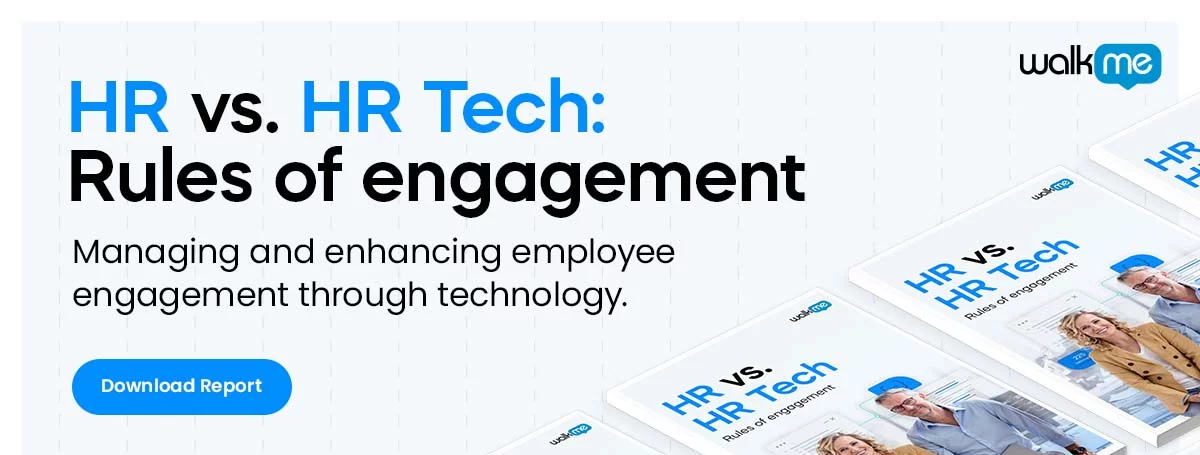
Hybrid workforce solutions, such as automation platforms and remote training software, can accelerate employee learning and boost productivity.
In this post, we’ll look at several remote tools that can enhance the digital employee experience and keep employees effective in today’s hybrid, modern workplace.
3 Ways Hybrid Workforce Solutions Can Enhance Employee Performance
Almost overnight, workplaces around the world went remote, and while many have returned to their offices, the hybrid office model will remain. Many research firms expect, for instance, that the hybrid office will be the “new normal.”
Among many other things, this means that employees will need to have adequate digital tools, regardless of where they are located.
The right hybrid workforce solutions can:
1. Reduce digital complexity
Digital innovation has fueled transformation across industries, economies, businesses, and the workplace.
While the net result of these changes has been positive, for employees, the influx of technology has also increased complexity in the workplace.
The more tools an organization implements, for instance, the more skills, workflows, and products they must learn. This can result in information overload and software-related frustration – common complaints for many workers, especially in the remote workplace.
As employees have migrated to the virtual office, for instance, many have had to adopt new tools such as:
- Teleconferencing tools
- Remote project management tools
- Collaborative chat tools
To add more fuel to the complexity fire, employees must learn these tools without onsite support.
The right tools, however – such as remote training software – can help reduce complexity, information overload, and software-related frustration.
2. Maintain a consistent digital experience
Onsite and remote work experiences can be quite different.
For example, working from home (WFH) often means working alone or with family members. For some, this can be a comfortable, productive experience.
Working at the office, however, usually involves commuting, coworkers and supervisors, and an office environment designed by the organization.
Importantly, employees will often use different tools in each environment.
This can clearly create an experience that differs between the office and the workplace, so it is important to adopt tools that streamline that experience.
For instance:
- Workflow tools, such as task and project management apps, can maintain consistent workflows, regardless of location
- Cloud-based office suites, such as Microsoft 365, can be used online, offline, and across devices
- Digital adoption platforms (DAPs), such as WalkMe, can be used for onboarding and training, no matter where employees are located
Consistency across tools and work environments is important for several reasons.
Using different software and different workflows, for instance, can disrupt routines and increase frustration.
Also, if employees use different sets of tools at different locations, productivity and performance can differ significantly.
3. Improve collaboration
Collaboration is key in any environment, but it can be particularly challenging when employees are geographically separated.
Establishing communication protocols and standardized workflows is essential to boosting collaboration, but tools are equally important.
While email can be helpful, complex workflows need more organization than email can provide.
A few useful collaboration tools include:
- Project management apps, such as Wrike or Freedcamp
- Task management apps, such as Trello
- Workplace chat apps, such as Microsoft Teams or Slack
- Video conferencing apps, such as Zoom
In the normal office, tools such as these can be very useful. But for distributed teams, they become even more essential – all of the tools listed above, for instance, can be used from any device, keeping hybrid teams constantly in sync.
Must-Have Qualities in Any Hybrid Workforce Solution
The tools listed above are just a few of the many hybrid workforce solutions that are on the market today.
When evaluating options, it is important to assess whether or not the platform is suitable for a hybrid environment.
Here are a few qualities to look for:
Cloud-based. Cloud-based solutions have become quite common today. Most of the largest office applications, such as Microsoft 365 or the Google product suite, are cloud-based. Yet certain specialized software may not be, so it is necessary to remember that, to be useful to hybrid teams, tools should be cloud-based.
Security. Security should become a priority for every business today. Since employees are working from home, for instance, they are expanding the “attack surface” – that is, there are more directions hackers can attack from. Every cloud-based solution, therefore, should have robust security features.
Learnability. When possible, apps should be user friendly and easy to learn. If not, look for training solutions or check their knowledge base. An app that can’t be learned, after all, can’t be used. Also consider investigating remote training platforms, such as DAPs.
Well-integrated. Third-party integrations can make a big difference in how well an app fits into workflows. Popular apps, such as Salesforce or Intuit’s applications, for instance, can integrate seamlessly with a wide range of other applications, making them easy to integrate into digital ecosystems.
Qualities such as these can ensure that employees can not only use these tools remotely, but that the tools can be securely and seamlessly integrated into their existing workflows.
WalkMe Team
WalkMe spearheaded the Digital Adoption Platform (DAP) for associations to use the maximum capacity of their advanced resources. Utilizing man-made consciousness, AI, and context-oriented direction, WalkMe adds a powerful UI layer to raise the computerized proficiency, everything being equal.



